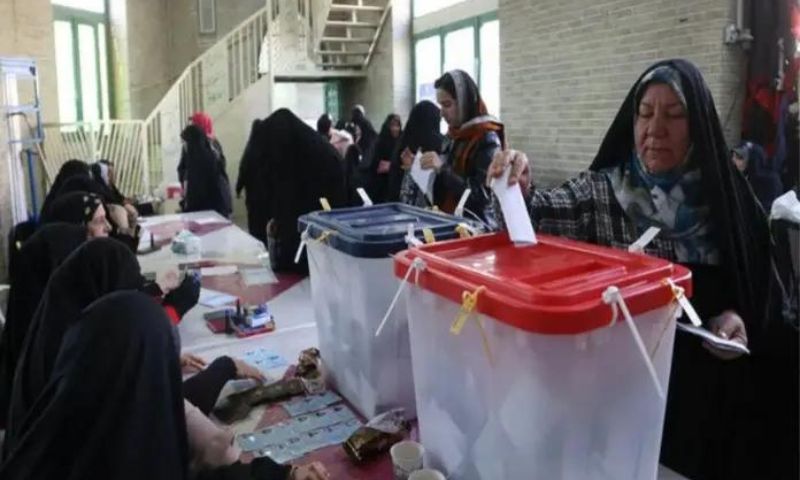TEHRAN, Iran: Official results from Iran’s partial rerun of parliamentary elections on Saturday revealed a strengthening of the conservative and ultra-conservative factions, solidifying their dominance in the chamber.
Following the March 1 election, which witnessed a historic low turnout of 41 percent since the 1979 Islamic Revolution, voters were summoned again on Friday to cast ballots in regions where candidates initially failed to secure sufficient votes.
Conservative and ultra-conservative candidates, as per pre-election classifications, secured the majority of the 45 remaining seats up for contention across 15 of Iran’s 31 provinces, as reported by local media outlets.
In a first for the country, voting in select constituencies, including eight in Tehran and cities like Tabriz and Shiraz, was conducted entirely electronically, as announced by state TV.
Interior Minister Ahmad Vahidi, addressing reporters in Tehran, noted that second-round participation typically dwindles compared to the first, although specific turnout figures for the recent round were not disclosed.
Vahidi emphasized that all candidates garnered relatively acceptable and substantial vote counts, contrary to some earlier predictions.
With the commencement of parliamentary proceedings on May 27, elected members are expected to elect a speaker for the 290-seat parliament.
In March, 25 million Iranians participated in the elections out of 61 million eligible voters. However, the Reform Front, a major coalition of reform parties, had declared its abstention from what it deemed “meaningless, non-competitive, and ineffective elections” prior to the initial round.
The latest election occurred amidst nationwide protests triggered by the September 2022 death of Mahsa Amini, a 22-year-old Iranian Kurd who was in custody for allegedly violating the country’s strict dress code for women.
In 2016, first-round turnout in parliamentary elections surpassed 61 percent before declining to 42.57 percent in 2020 due to the Covid-19 pandemic.























